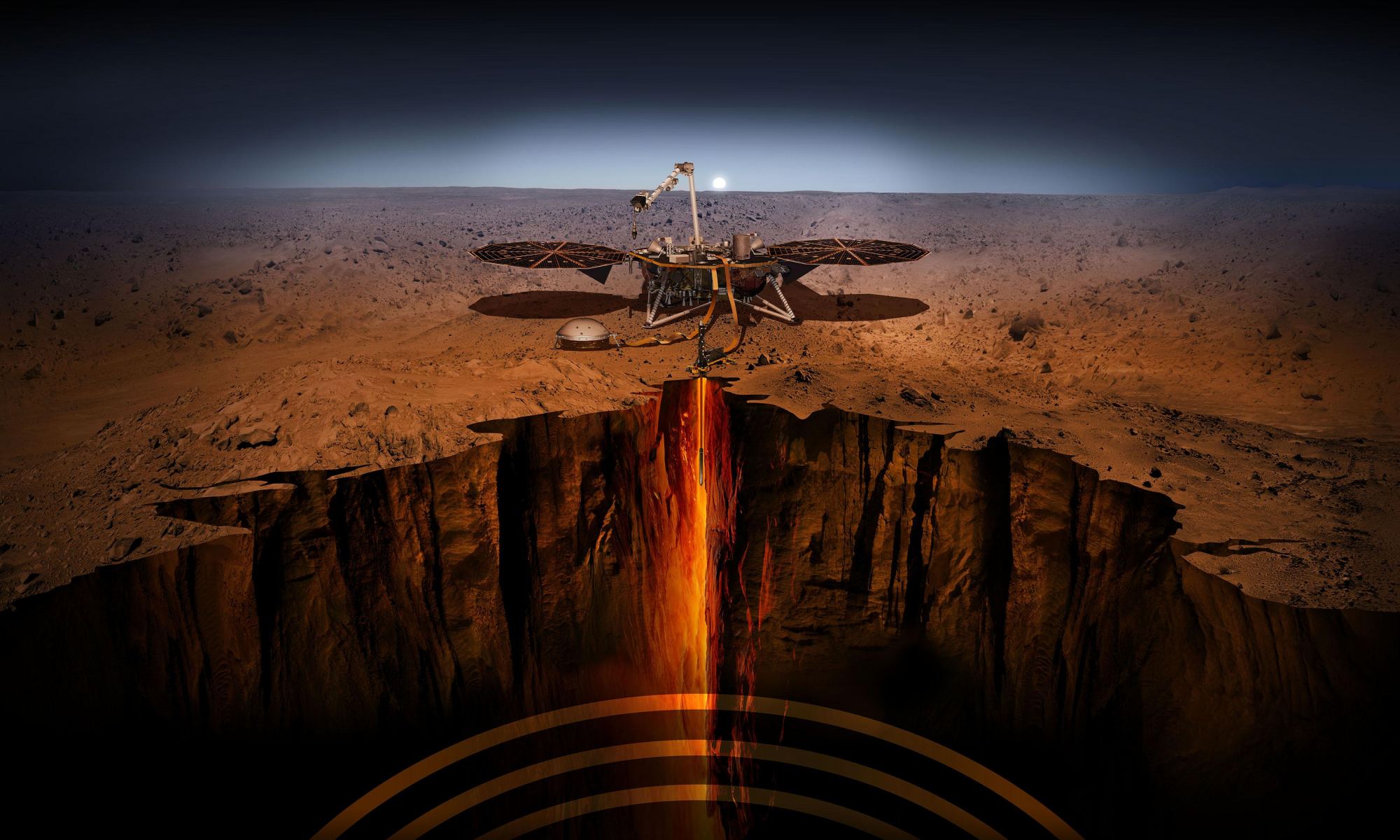Since February 2019, NASA’s Interior Exploration using Seismic Investigations, Geodesy and Heat Transport (InSight) lander has been making the first-ever measurements of tectonics on another planet. The key to this is InSight’s Seismic Experiment for Interior Structure (SEIS) instrument (developed by seismologists and geophysicists at ETH Zurich), which has been on the surface listening for signs of “marsquakes.” The dataset it has gathered (over 1,300 seismic events) has largely confirmed what planetary scientists have long suspected: that Mars is largely quiet.
However, a research team led by ETH Zurich recently analyzed a cluster of more than 20 recent marsquakes, which revealed something very interesting. Based on the location and spectral character of these events, they determined that most of Mars’ widely distributed surface faults are not seismically active. Nevertheless, most of the 20 seismic events observed originated in the vicinity of Cerberus Fossae, a region consisting of rifts (or graben). These results suggest that geological activity and volcanism still play an active role in shaping the Martian surface.
The research was led by Simon C. Stähler, a senior scientist with the Seismology and Geodynamics group at ETH Zurich’s Institute for Geophysics. He and his colleagues were joined by researchers from the German Aerospace Center’s Institute of Planetary Research (IPR), Harvard University, the Laboratory of Planetology and Geodynamics (LPG) at the Université Paris Cité, and NASA’s Jet Propulsion Laboratory. The paper that describes their findings, “Tectonics of Cerberus Fossae unveiled by marsquakes,” recently appeared in the journal Nature Astronomy.

Based on the seismic data gathered by InSight, the team concluded that low-frequency quakes could indicate the modern-day presence of molten magma in the Martian mantle. Specifically, they found that the epicenters of these quakes were located mostly in the innermost part of Cerberus Fossae – at depths of 30 to 50 km (18.6 to 31 mi) beneath the surface. In this region, named after the hellhound that guards the gates of Hades (the underworld in Greek mythology), the terrain is sinking under its own weight, forming parallel rifts that pull the crust of Mars apart.
The team theorized that these quakes could be the last rumbles from this once-active volcanic region or that magma is moving eastward beneath the surface towards its next eruption. When the team examined orbital images of this area, they noticed that these quakes happened very close to a structure in the Cerberus Fossae Mantling Unit (previously designated a “young volcanic fissure”). This feature was surrounded by dark deposits of dust, which was present in all directions and not only in the dominant direction of the wind (as was expected).
As Stähler explained in a recent ETH Zurich press release, the only explanation for this was the presence of volcanic activity in the recent past. “The darker shade of the dust signifies geological evidence of more recent volcanic activity – perhaps within the past 50,000 years – relatively young, in geological terms,” he said.
Because of its terrestrial (rocky) nature and its proximity to Earth, Mars provides opportunities to study geological processes similar to those that shaped our planet. While technically closer, Venus’s super dense atmosphere prevents missions from studying it with anything other than surface-mapping radar and temperatures hot enough to melt lead. Because of their distance from Earth, which imposes communication delays, all other bodies in the Solar System have only been studied by orbiters and probes.

In addition, Mars is the only terrestrial planet beyond Earth known to have a core composed of iron, nickel, and sulfur that may have once supported a magnetic field. On Earth, this field results from dynamo action in the planet’s interior, where a liquid outer core rotates around a solid inner core (in the opposite direction as Earth’s rotation). It is widely believed today that roughly 4 billion years ago, the interior of the Red Planet cooled rapidly, causing the outer core to solidify while the inner core became molten. Without this field, Mars’ atmosphere was slowly stripped away by solar wind for eons.
Previously, scientists suspected this also meant that Mars became geologically dead billions of years ago. Nevertheless, these and other indications provided by robotic missions suggest that geological activity has not entirely ceased within the Red Planet. While considerable research still needs to be done to confirm these results, the evidence of potential magma in Mars’ mantle today is fascinating. These results demonstrate the effectiveness of the InSight lander and its sophisticated instruments and how multiple robotic missions working together can lead to breakthroughs. Said co-author Domenico Giardini:
“InSight’s SEIS is the most sensitive seismometer ever installed on another planet. It affords geophysicists and seismologists an opportunity to work with current data showing what is happening on Mars today – both at the surface and in its interior.”
In the coming years, many more robotic orbiters, landers, and rovers are bound for Mars. The research they conduct into Mars’ surface geology, environment, climate, and atmosphere will pave the way for crewed missions planned for the 2030s.
Further Reading: ETH Zurich

